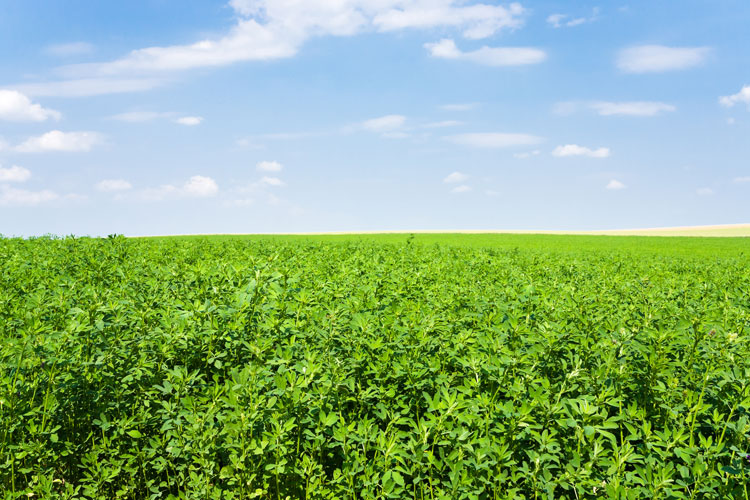
After planting, the best strategy to promote a good stand of alfalfa is weed control.
“If you plant at the right time, and you have good soil preparation and good soil nutrients, especially phosphorus, you should have a good stand, ” said Mariano Galla, an agronomy and weed science adviser for University of California Cooperative Extension at UC Davis’s Alfalfa and Forages Field Day.
“As you may know, weeds can be a really big problem in alfalfa,” Galla said. “They can reduce the quality of your forage; they also compete for water and nutrients with alfalfa that can impact the growth of their roots.”
He continued, “It’s even more important in seedling alfalfa because it can impact establishment.”
The advice to establish a good stand is an often-cited recommendation. Unfortunately, it is sometimes out of the control of producers. When weeds do occur in seedling alfalfa, Galla explained herbicides are an option, but so is waiting the weeds out.
“One of the things you can do is wait. Sometimes, patience is your best option when you have seedling alfalfa with weeds,” said Galla. “The majority of weeds in seedling alfalfa in California in spring are winter annuals. As spring comes in and the temperatures go up, alfalfa starts growing faster and the weeds are going down in their life cycles.”
Waiting weeds out means that they will be mowed down with first cutting and then the stand should clean up for following cuttings.
Herbicides can be used as well. Galla suggested waiting weeds out instead because of the added expense and potential for herbicide resistance. In cases where weeds are bad, herbicide use or clipping even are options.








